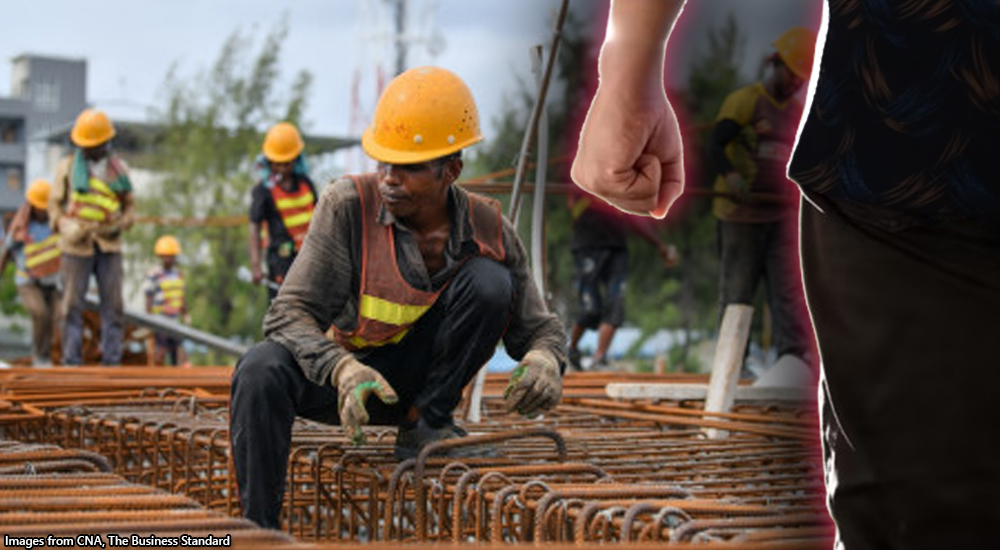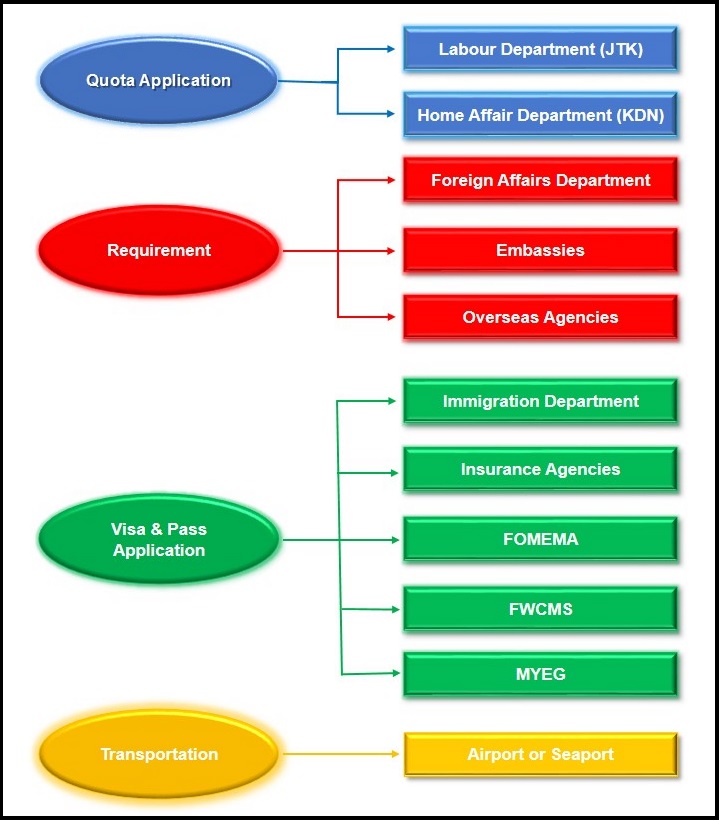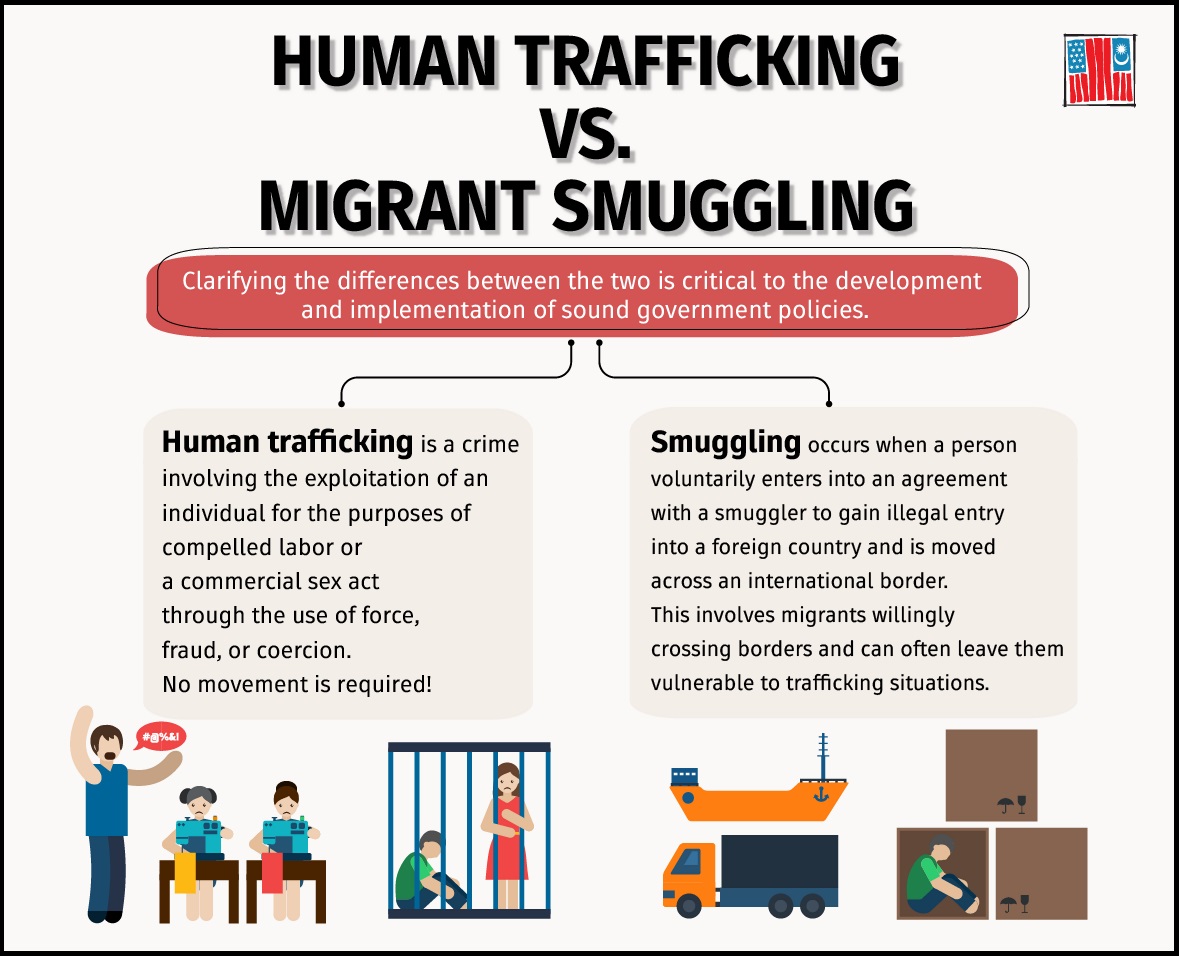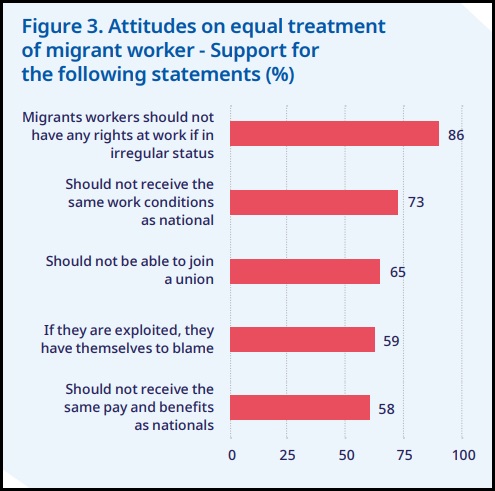The hidden villains behind Malaysia’s migrant worker surplus

- 28Shares
- Facebook24
- Twitter2
- WhatsApp2
If complaining were an Olympic sport, Malaysians would win first place for sure. Our grievances are plentiful–whether it’s the sun that’s too hot or the city traffic that is endless or that there are so many migrant workers in our country stealing our jobs…..chup, hold that last one.
So last month, our Home Minister, Saifuddin Nasution, announced that Malaysia had received a total of 667,418 foreign workers, compared to the 518,000 they were expecting. If you’re too lazy to pull out a calculator, that’s close to 150,000 people who pretty much appeared out of thin air!
Now, this excess could mean plenty of things: administrative oversights, miscalculations, or maybe–just maybe–there’s something more sinister underfoot. You might not think to associate human trafficking with the foreign labour market, but that’s exactly what’s happening right now. Just a couple of months back, the US State Department dropped its 2023 human trafficking (TIP) report for Malaysia, and surprise, surprise–the majority of victims are actually among the millions of migrant workers living here.
At this point, you’re probably curious about how things got this far. Just who the heck is responsible for smuggling migrant workers into our country?
Employers and recruitment agencies have first contact with migrant workers
The process of bringing a foreign worker into Malaysia is actually quite a complex one. First, the employer must prove they can’t find locals for the job. Then it’s a bureaucratic trip to the Home Ministry and the Immigration Department, among other places, where the paperwork involved would give you more trauma than a boss who forces you to kerja overtime. Then ofc, there’s money that needs to be paid, with levy fees costing up to RM1,850. And only after all of that can the actual hiring happen.
But while you, a perfectly ordinary rakyat Malaysia, have every right to think this whole process sounds very mafan, the employers and recruitment agencies shouldn’t–since, y’know, the point of going through all these hoops is to ensure a safe environment and fair system for everyone involved. Except they do… find it mafan, that is.

Personally speaking, it’s a different level of mafan when you have to colour code the departments involved. Image from Agensi Pekerjaan Cosmoten
A study on foreign workers in Malaysia revealed that employers don’t really want to fork out for the levy fees, so they abuse their existing work permits to smuggle foreign workers into the country. Recruitment agencies have also been reported to outsource their recruiting duties to third parties, which is often done informally. Then who’s to say how the workers are brought in, whether through legal channels or not?
And just like that, foreign workers get caught in the crossfire, especially since they don’t have official, documented reasons to work in Malaysia.
“Outsourcing companies will task them to work informally for other companies… Their work permits are tied to their employer so when they opt to change employers, their work permit is invalidated, causing them to become undocumented,” –Anita Ghimire, Migration for Development and Equality (MIDEQ) co-investigator, via excerpts from Malay Mail
But while employers and recruitment agencies certainly play a major part in the oversupply of migrant workers, it can’t be denied that there are people in much higher places who are also at fault. Namely…
Malaysian officials and Malaysian policies are contributing to labour trafficking
Alright, let’s get into what human trafficking really means for the migrant workforce. If you’re picturing something like people being snatched off the streets and sent to work in another country, well, that’s one way it can happen. But it’s not always so straightforward. According to the International Justice Mission, labour trafficking involves the use of deception, threats or violence to force vulnerable people to work. And one of those methods includes false debts.
Did you know, Bangladeshi workers shell out up to RM20,000 just to be stuck with menial jobs in Malaysia?
Most of the time, the money goes straight to the middle-man or recruitment agents, sometimes even the employers. But with these debts hanging over their heads, the workers become more susceptible to trafficking and exploitation since they’d do pretty much anything to get that money back. And the worst part is, Malaysian law actually permits employers to take away the migrant worker’s first month salary in lieu of a ‘placement fee’.

When you realise other people get paid for their jobs and you’re the only one who paid to get yours
And things just go downhill from there–aside from our somewhat skewed laws, there’s also a rampant web of corruption that spans from immigration officers to government officials to even the police, all of whom have accepted bribes and allowed the illegal smuggling of migrant workers to continue. Yet when the workers are caught, the spotlight is always on them and their alleged crimes, rather than on the Malaysians in positions of authority who facilitated those crimes in the first place.
So that’s the situation with specific, individual parties, and now, if we take a step back and look at the bigger picture…
Malaysia’s migrant workers may be many… but our *official* human trafficking victims are few
Going back to that TIP report by the US, we noticed a line that was very interesting;
“Law enforcement officers continued to conflate human trafficking and migrant smuggling,” –excerpt from ‘2023 Trafficking In Persons Report: Malaysia’ by US Department of State
Okay so to put that into simpler terms–instead of making a clear distinction between human trafficking victims and those who are actual illegal migrant workers, Malaysia simply lumps them together into the same boat. And in this context, that boat is a dingy, overstuffed migrant-worker one. So in other words, our current oversupply of migrant workers may very well be due to our government’s failure to categorise them as human trafficking victims.

Just FYI, migrant smuggling refers to actual illegal migrant workers. Image from Facebook @US Embassy KL
Now bear with us while we grab our tinfoil hats, because Malaysia might actually benefit from reporting low human trafficking numbers. Some of you guys might’ve heard that we just got bumped up to the Tier 2 Watchlist in the human trafficking ranking. To clarify, here’s what the tiers (sorta) mean:
- Tier 1: the country is checking all the necessary boxes in their fight against human trafficking
- Tier 2: the country is otw there, and are doing their bestest to check those boxes
- Tier 2 Watchlist: the country is doing something, but they’re on the brink of flunking
- Tier 3: the country doesn’t give a rat’s ass about anything human trafficking related.
What you should know right now is that if a country is at Tier 3, the US can impose sanctions on them–i.e the US will tarik balik any aid (money) they were previously willing to give 👀What you should also know is that Malaysia spent the last two years at Tier 3 👀 In fact, some NGOs have hinted that a third consecutive year at Tier 3 could bring us those dreaded sanctions 👀 So maybe all that boat lumping was done with an ulterior motive in mind 👀
Well, tinfoil speculations or not, at the end of the day…
Malaysia is just not doing enough for migrant workers in the country
From laws to law enforcement officers to everyone in between, there are clear gaps where indifference, carelessness, and greed have left migrant workers vulnerable to abuse. Holding these parties accountable is crucial, but let’s be real–we all have preconceived notions about migrant workers and we are contributing to their unfair treatment too. Just take a look at the picture below. How is it that we can’t even recognise their basic human rights?

The Malaysian sentiment. C’mon guys we can do better 😮💨 Image screenshot from International Labour Organization
But let’s dig into those preconceived ideas a bit more. We often jump to conclusions about migrant workers being the offenders when it comes to crimes committed in Malaysia, when in truth, they’ve also been victims. Some research suggests that the media plays a part in making them seem like the villains, thanks to over-the-top headlines and emphasis on their foreign nationalities.
“The newspapers revealed the nationality/foreign status of the person involved in the crime events either in the headlines of the news or the lead sentence of the news. It is believed that the act is to add drama, readability, and value of the crime news,” –excerpt from Norealyna Misman et al, from SHS Web of Conferences (2017)
And while it’s important to address and appropriately punish crimes, it’s a problem in Malaysia that we tend to generalize and hold all migrant workers responsible for the actions of a few. At the very least, try to put yourself in their shoes. Imagine being a migrant worker in a foreign country–how would you want to be treated?
- 28Shares
- Facebook24
- Twitter2
- WhatsApp2








